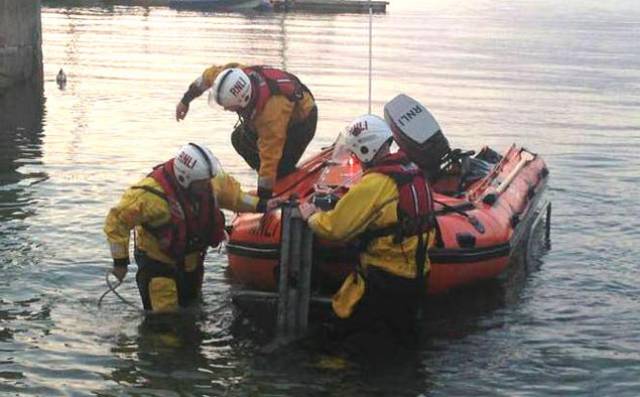Dun Laoghaire RNLI has rescued seven teenagers this afternoon after they got into difficulty when walking on Sandymount Strand on Dublin Bay.
The volunteer lifeboat crew was requested to launch their inshore lifeboat at 2.24pm at the request of the Irish Coast Guard after one of the group of students raised the alarm.
The inshore lifeboat helmed by Mark McGibney and with crew member Adam O'Sullivan onboard, launched in four minutes and made their way to the scene some four nautical miles out from the station, in what were described as flat calm weather conditions.
The Irish Coast Guard helicopter Rescue 116 from Dublin was also tasked.
Once on scene the crew observed the seven casualties dry, safe and well on a sandbank but surrounded by water. The group had got into difficulty when caught by an incoming tide.
The lifeboat crew proceeded to walk the lifeboat into the shallow area where the teenagers then transferred themselves onto the lifeboat. The helicopter meanwhile hovered over and stood by as the casualties were safely taken onboard the lifeboat. The lifeboat was brought into deeper water before the engine was started and it made its way back to the lifeboat station escorted by the helicopter overhead.
Speaking following the call out, Dun Laoghaire Helm Mark McGibney said: 'We would like to commend the group for raising the alarm when they got into trouble, that was the right thing to do. As the weather picks up and as we begin the Easter holidays, we would remind everyone to enjoy themselves but to always respect the water. Check the weather conditions and tide times before planning your activity and if you do get into difficulty dial 999 or 112 and ask for the Coast Guard.
































































